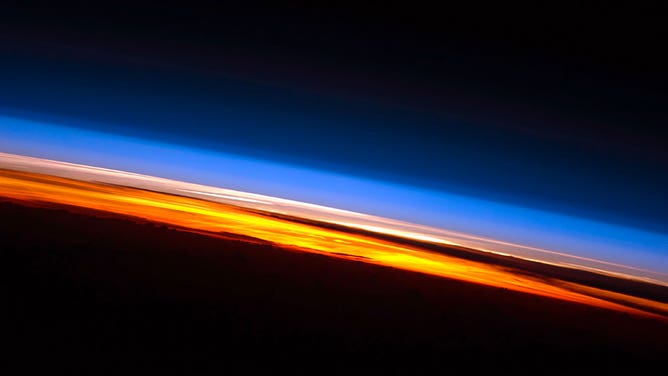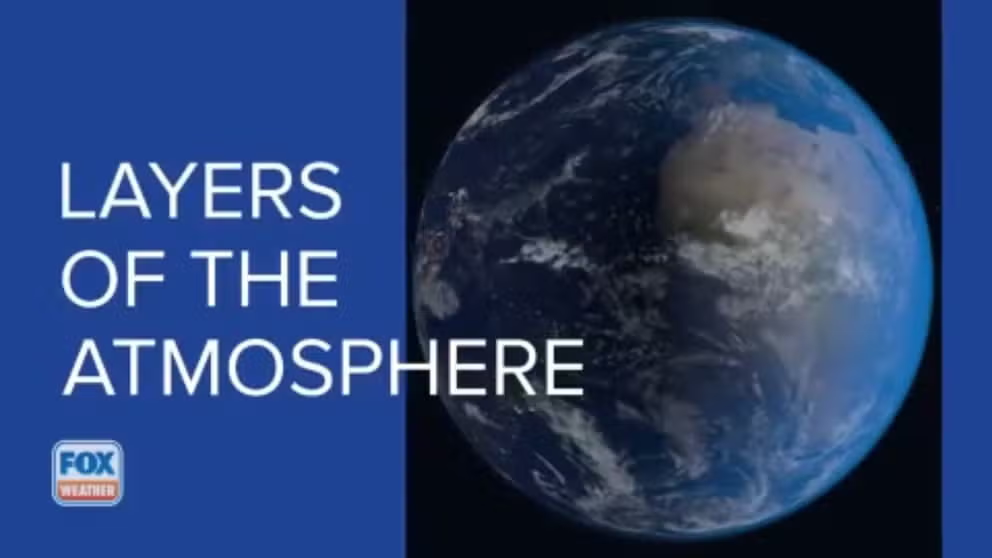What are the 5 layers of our atmosphere?
Just about everything that happens on Earth happens in the smallest layer of our planet’s atmosphere. The atmosphere itself is more than 6,000 miles thick.
The 5 layers of Earth's atmosphere
Earth's atmosphere is more than 6,000 miles thick, and is made up of five distinct layers.
Everything that happens on our planet above the ground is taking place in Earth’s protective envelope called the atmosphere.
While more than 6,000 miles thick, the atmosphere is comprised of five distinct layers. Each layer has unique characteristics. In between these layers are boundaries called "pauses," where changes in temperature, chemical composition and density are the greatest.
Here’s a closer look at each of these layers, starting from the ground and moving upward.
Troposphere
The lowest and thinnest layer of the atmosphere is called the troposphere. According to NASA, the average thickness is about 7.5 miles. The National Oceanic and Atmospheric Administration said the height varies depending on location, ranging from about 12 miles thick at the equator and just under 4 miles thick at the poles.
Even though this is the smallest layer of the atmosphere, there is a lot going on in the troposphere. This is where we live and where the weather we experience happens. Many commercial jets fly near the top of this layer.
HERE'S WHAT CAUSES TURBULENCE AND WHY YOU SHOULDN'T BE AFRAID OF IT
The air becomes thinner the higher into the troposphere your travel, which allows the temperature to drop. According to NOAA, the average temperature starts at 62 degrees at the ground and drops to negative 60 degrees at the tropopause.
Stratosphere
The second-lowest layer of the atmosphere is the stratosphere. It extends from the top of the troposphere to a height of about 31 miles.
The stratosphere is home to the all-important ozone layer, which filters harmful UV radiation from the sun. According to NOAA, the creation of ozone in this layer results in heat which means temperatures increase the higher up you travel – from about negative 60 degrees to about 5 degrees at the top.
OZONE HOLE CLOSES LATER THAN USUAL FOR 3RD YEAR IN A ROW, SCIENTISTS SAY
The warmer air sitting atop the colder air creates stability, preventing most clouds from developing. However, NASA said some stratospheric clouds can be found near the poles on occasion.
Weather balloons and supersonic jet planes soar in this layer.
Mesosphere
The prefix "meso" means middle, so it’s no surprise that this is the middle layer of the atmosphere. It goes from the top of the stratosphere to an altitude of about 53 miles.
According to NOAA, gases contained in the mesosphere are thick enough to slow down meteors that are flying toward Earth. This burns up the space rocks and results in the shooting stars or fireballs we see here on the ground.
WATCH THE MOMENT A FIREBALL SMASHES INTO EARTH'S ATMOSPHERE AND EXPLODES
NASA said that there is a very thin layer of water vapor at the top of the mesosphere, which can create wispy clouds called noctilucent clouds.
The mesosphere is also home to the coldest temperatures in Earth’s atmosphere, starting at an average of 5 degrees at the bottom of the layer and dropping to about negative 180 degrees at the top.
Rocket-powered aircraft can reach this layer of the atmosphere, according to NASA.

Sunset on the Indian Ocean as seen by astronauts aboard the International Space Station (ISS). The image presents an edge-on, or limb view, of Earth’s atmosphere as seen from orbit. Earth’s curvature is visible along the horizon line, or limb, that extends across the image from center left to lower right. Above the darkened surface of Earth, a brilliant sequence of colors roughly denotes several layers of the atmosphere.
(NASA)
Thermosphere
The thermosphere, known as the upper atmosphere, is much thicker than any of the three lower layers. It runs from the top of the mesosphere to an altitude of about 375 miles.
Molecules in this layer have a very low density, which allows a dramatic increase in temperatures as you go higher into the thermosphere, ranging from about negative 180 degrees at the bottom to about 3,600 degrees at the top.
UFO OVER TURKEY? LEARN WHAT MAKES THESE CLOUDS APPEAR SO ALIEN-LIKE
"However, despite the high temperature, this layer of the atmosphere would still feel very cold to our skin," NOAA experts wrote on the agency’s website. "The high temperature indicates the amount of the energy absorbed by the molecules, but with so few molecules in this layer, the total number would not be enough to heat our skin."
You’ll find auroras and the International Space Station in this layer.
Exosphere
The prefix "exo" means outer or external, making the exosphere the outermost layer of Earth’s atmosphere. It is by far the thickest layer of the atmosphere running from about 375 miles above the surface to 6,200 miles.
WEATHER SATELLITES EXPLAINED: HOW NASA, NOAA MAKE FORECASTING POSSIBLE
Particles in this layer escape into space.
According to NASA, most satellites orbit Earth in the exosphere.
